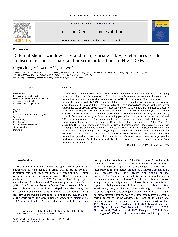摘要
Different sliding window sizes and inappropriate subtype references are often selected for identifying HIV-1 recombination, which results in discordant recombination maps even for the same HIV-1 recombinant and affects the tracking of the epidemic of HIV-1 recombinants. Here, we re-analyzed 11 previously characterized HIV-1 CRFs using Simplot software (version 3.5) with several sliding window sizes (200, 250,300, 350 and 400 nt), moving in a step of 10 nt, respectively. We found that the crossovers determined under 250 and 350 nt windows, especially under 300 nt window are significantly closer to hypothetical breakpoint than crossovers obtained under 200 and 400 nt windows (P < 0.01). These suggest that 300 nt window is a preferential selection for HIV-1 recombination analysis. In addition, instead of one bootscan analysis, three bootscanning plots with sliding window sizes of 250, 300 and 350 nt are also recommended. The comparison between crossovers determined under different moving steps showed that a small moving step (e.g. 10 nt) is better than a larger step (e.g. 50 nt) (P < 0.05), suggesting that a small moving step should be used in bootscan analysis. Moreover, we found that inappropriate usage of subtype references in bootscan analysis resulted in misleading recombination maps. HIV-1 strains prevailing in the same geographic areas with HIV-1 inter-subtype recombinants are believed to have chance to participate in recombination events. When HIV-1 reference strains from recombinant-prevailing areas were applied, identified recombination patterns were well supported by phylogenetic analyses. So, in bootscan analysis, HIV-1 subtype references should be selected from recombinant-prevailing areas.
